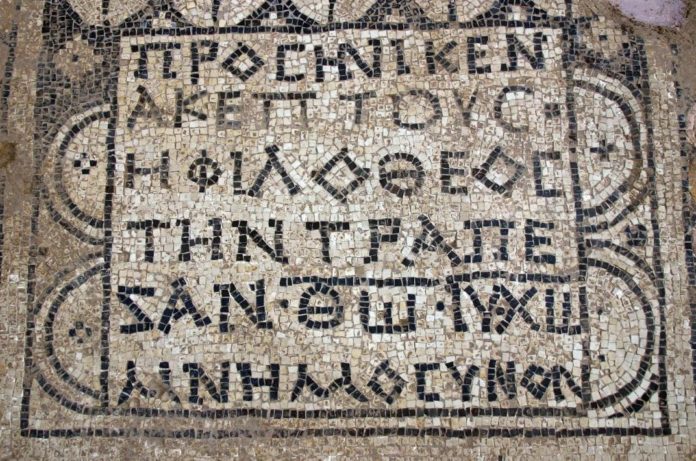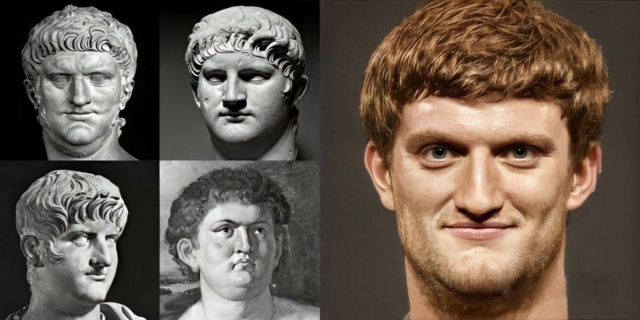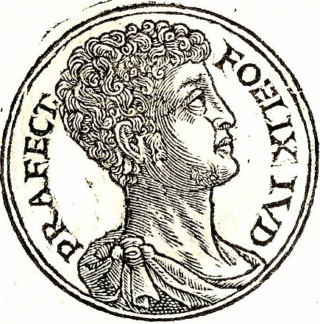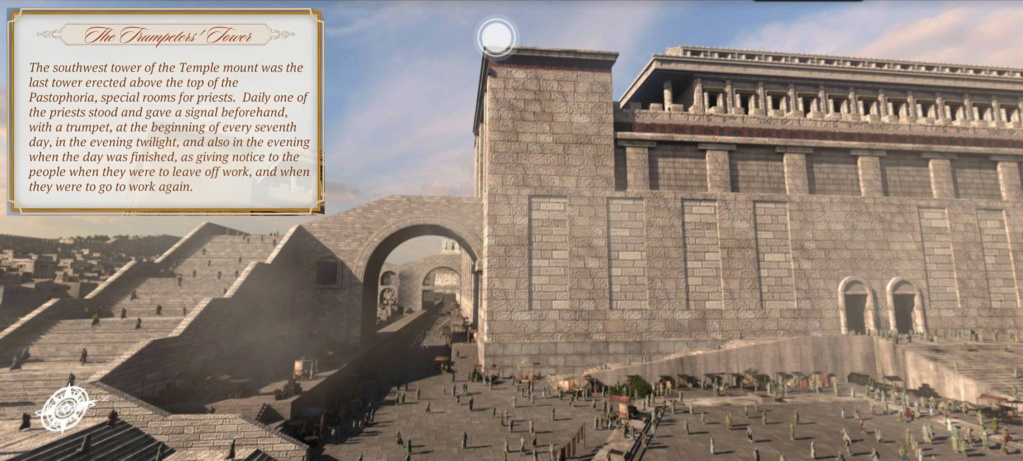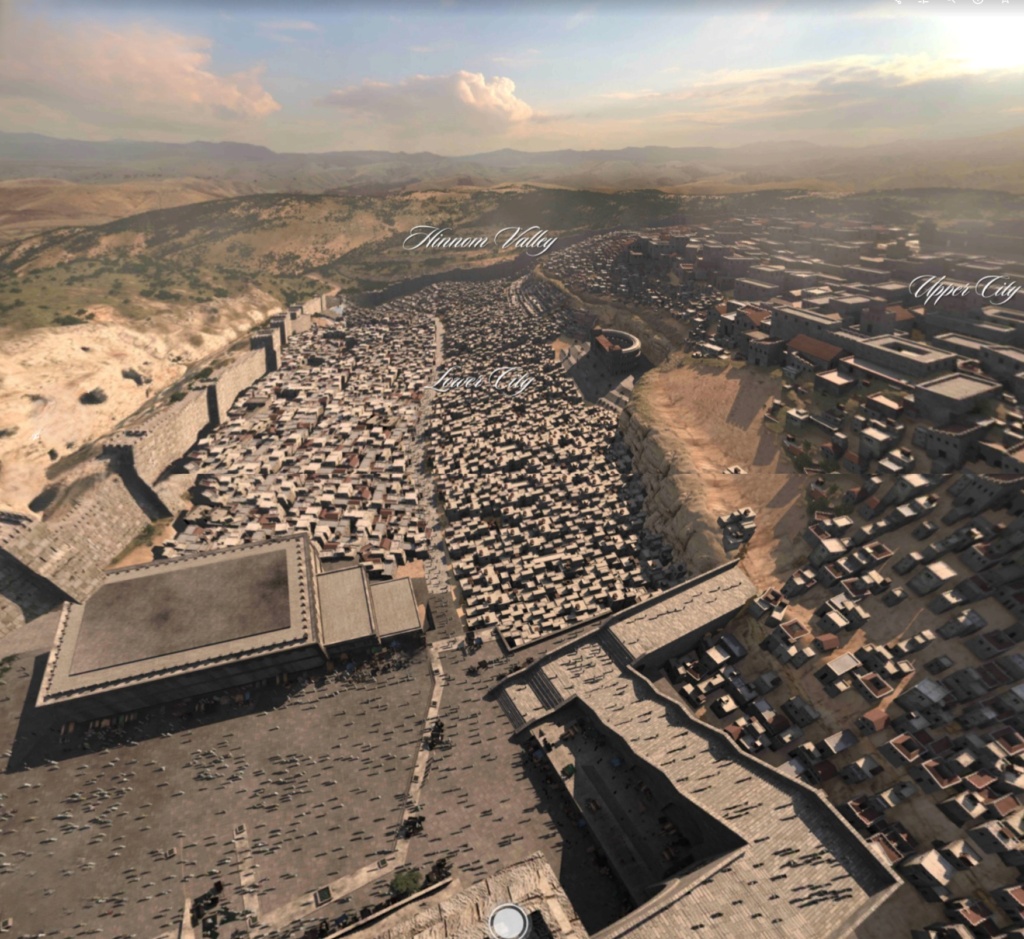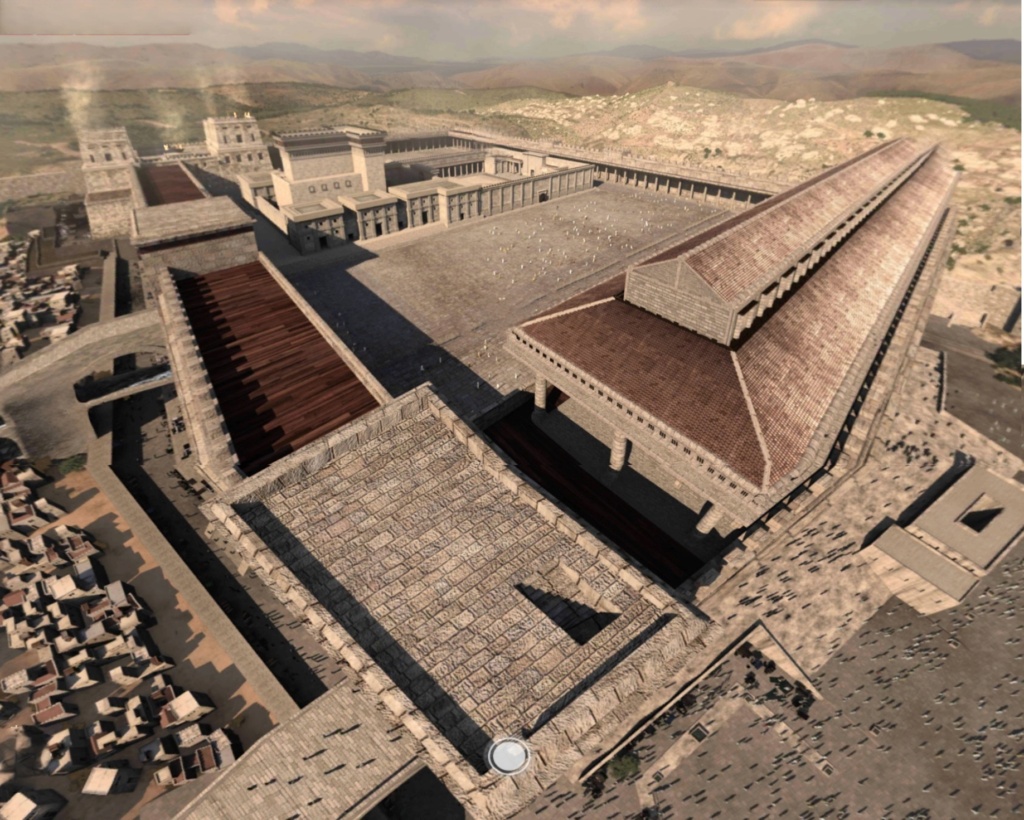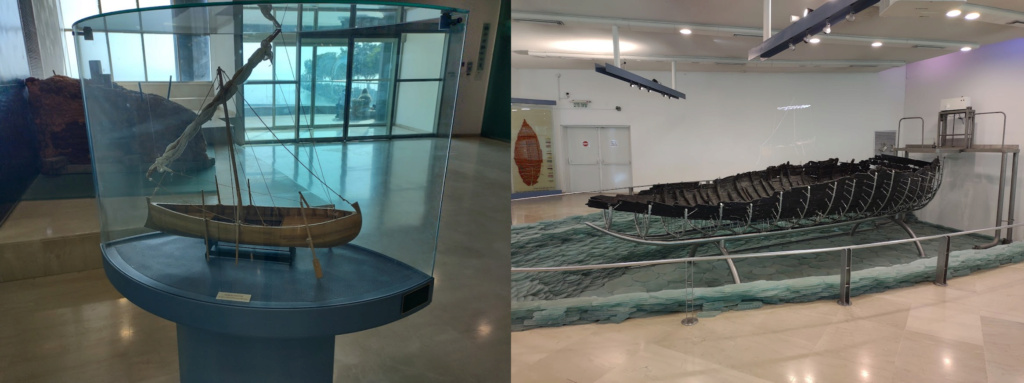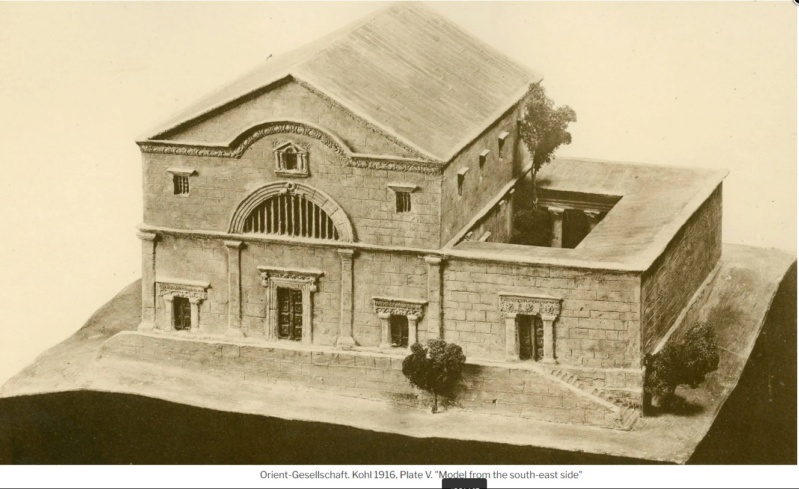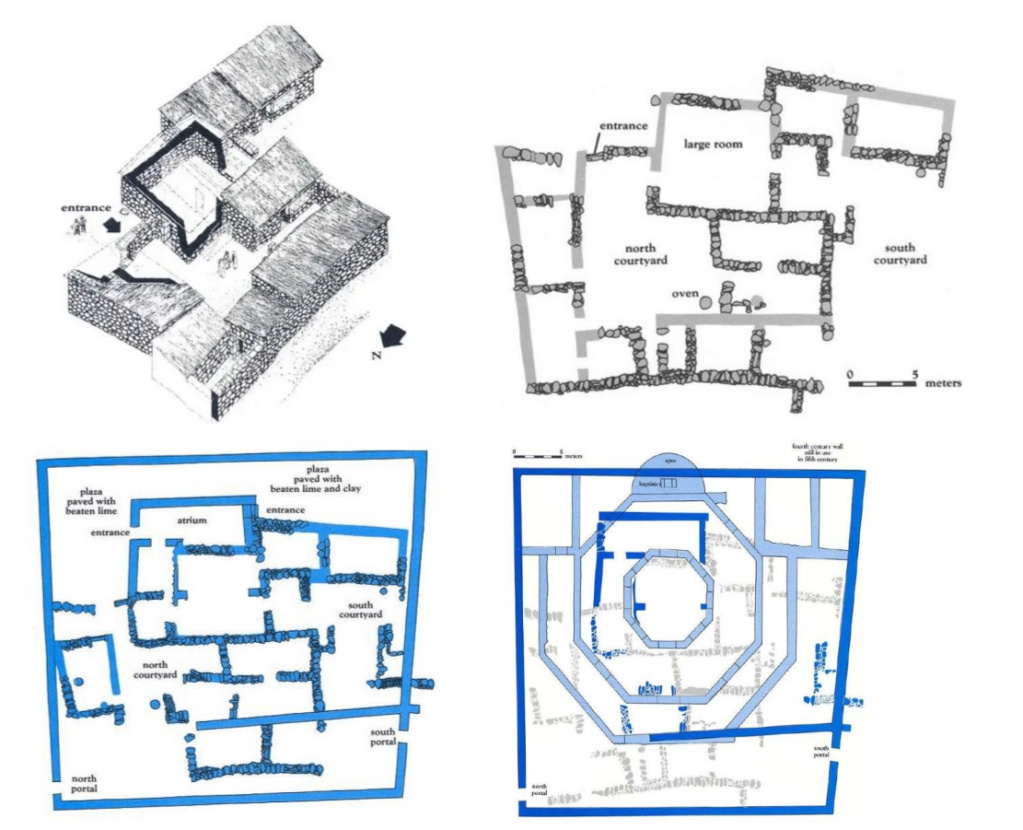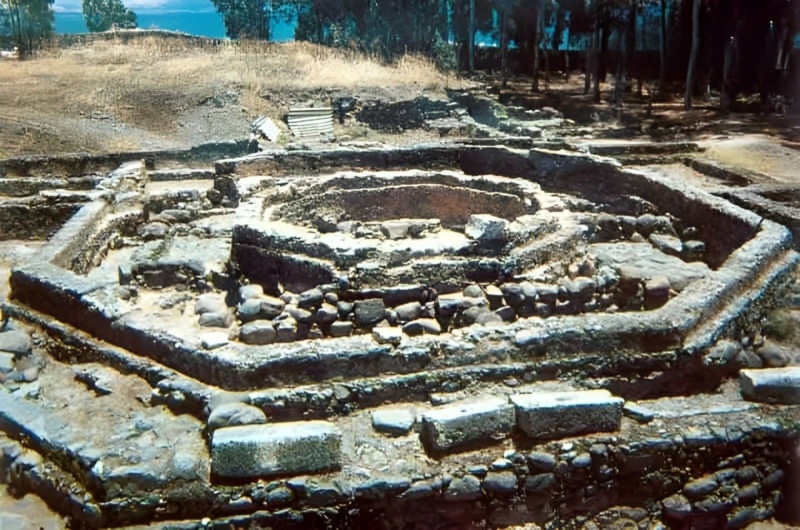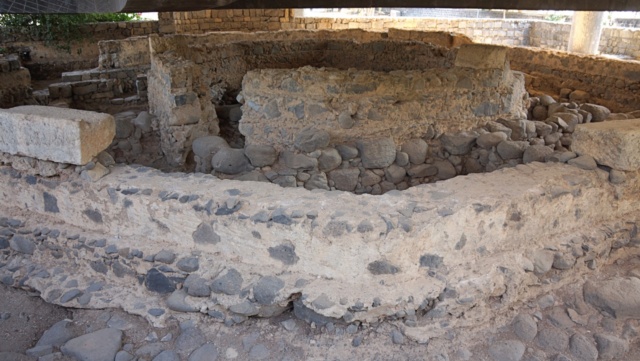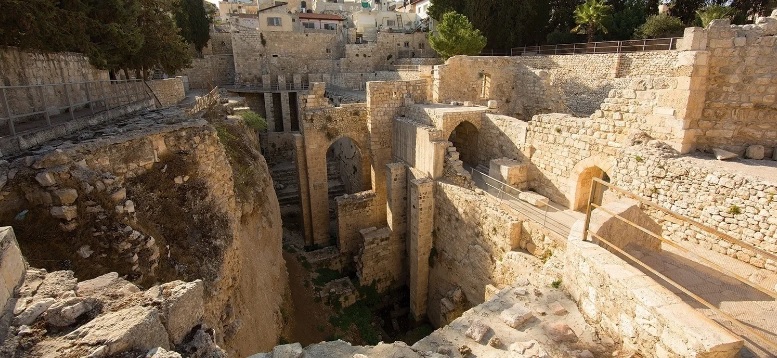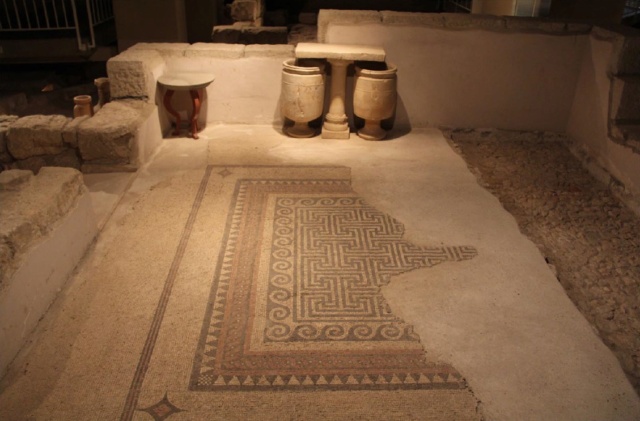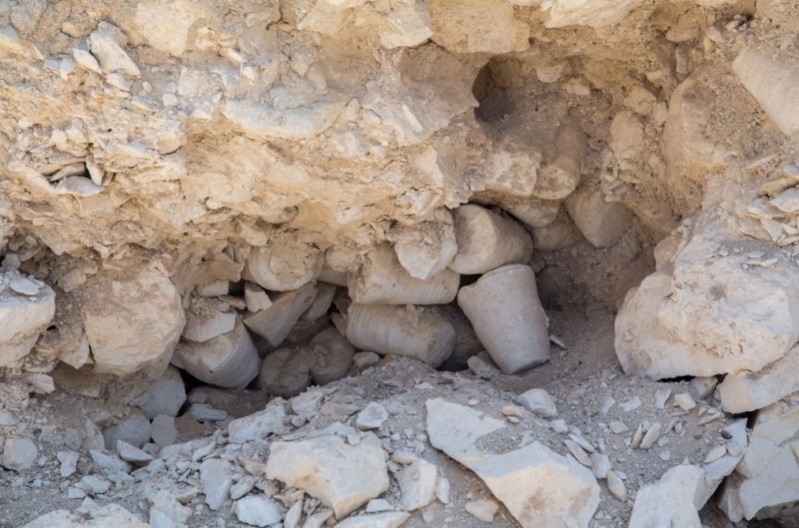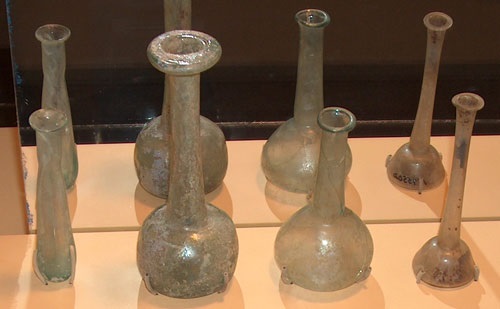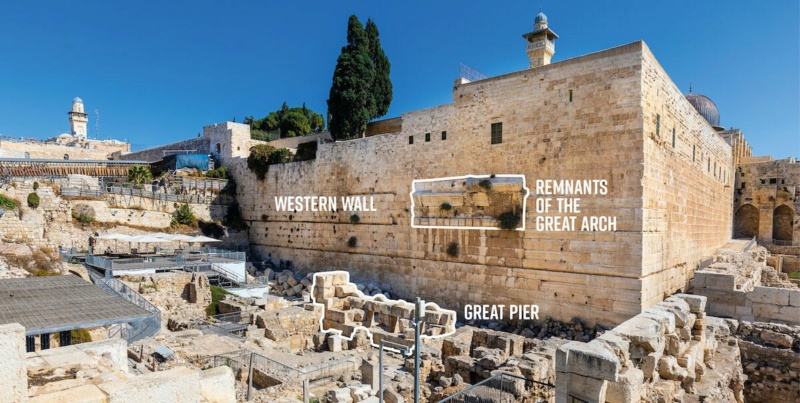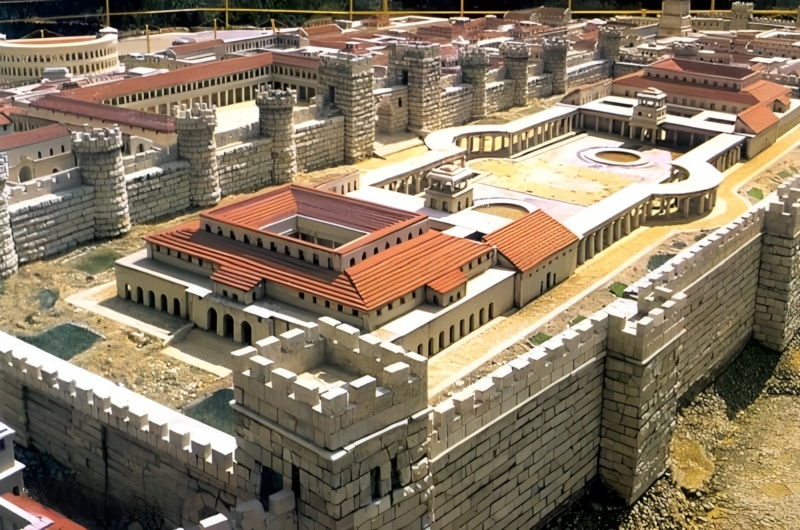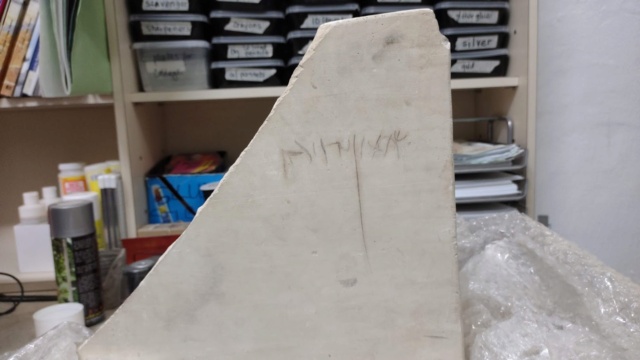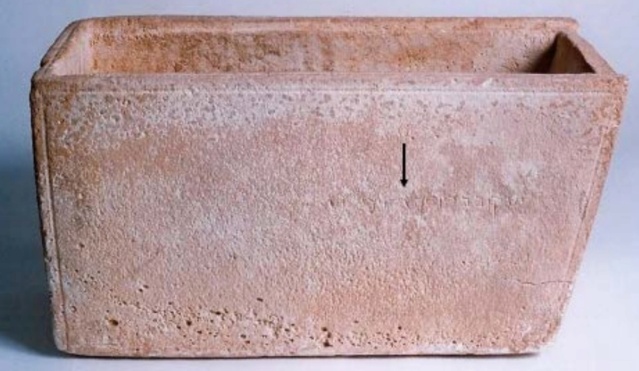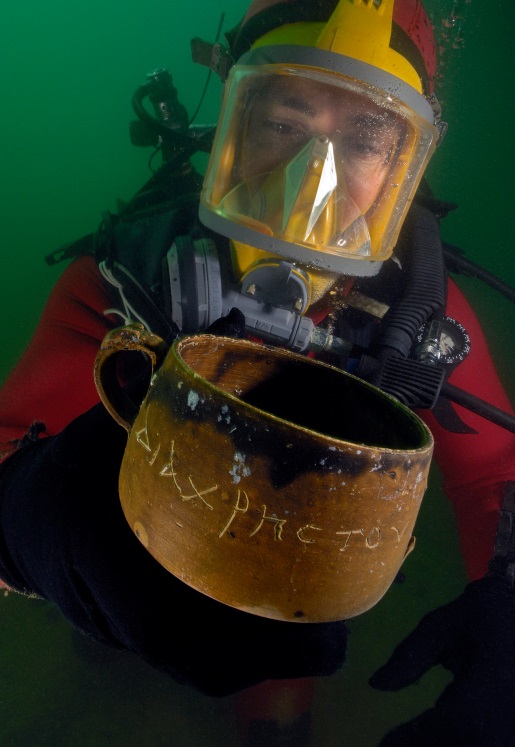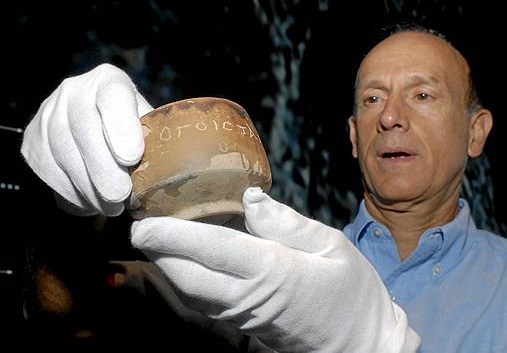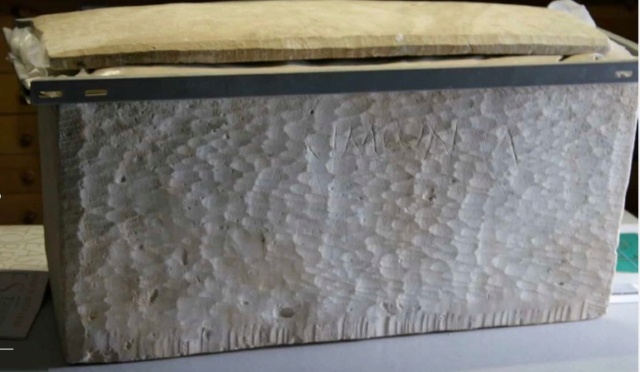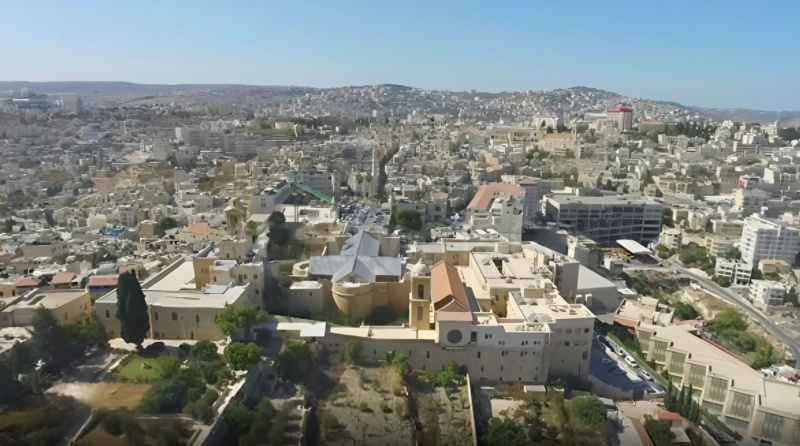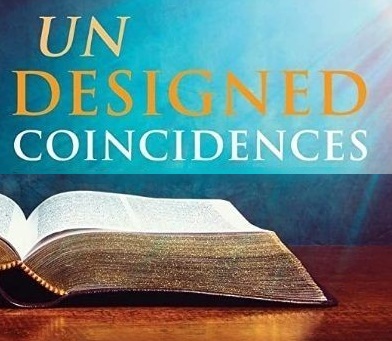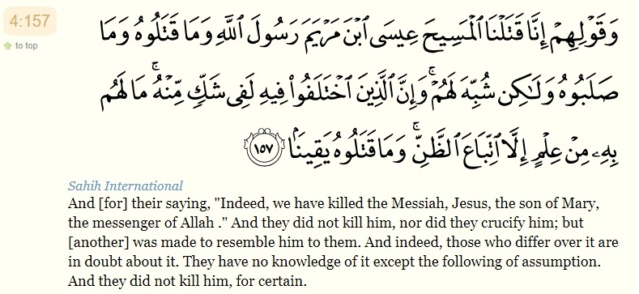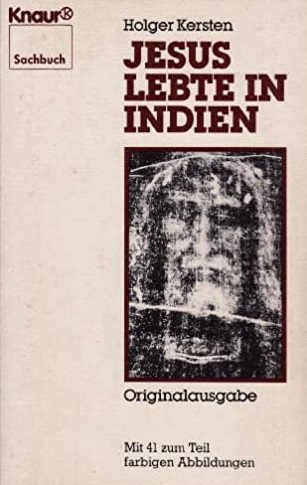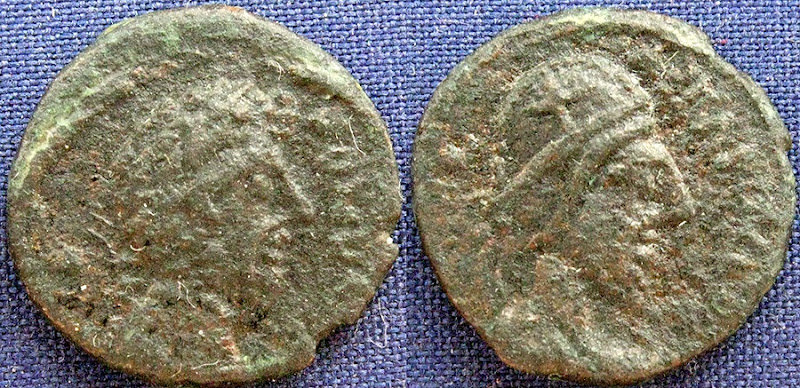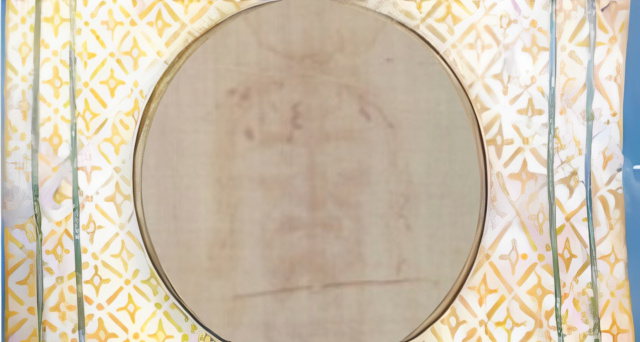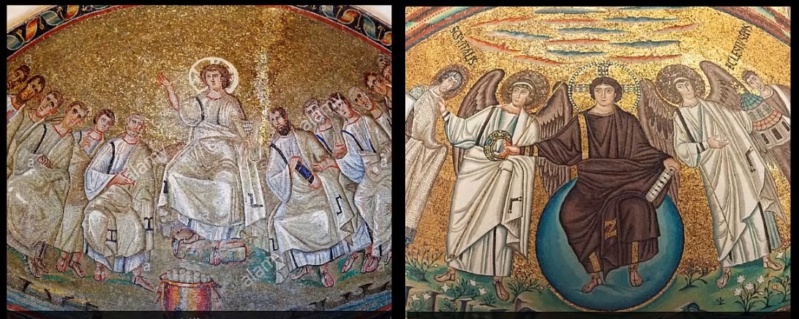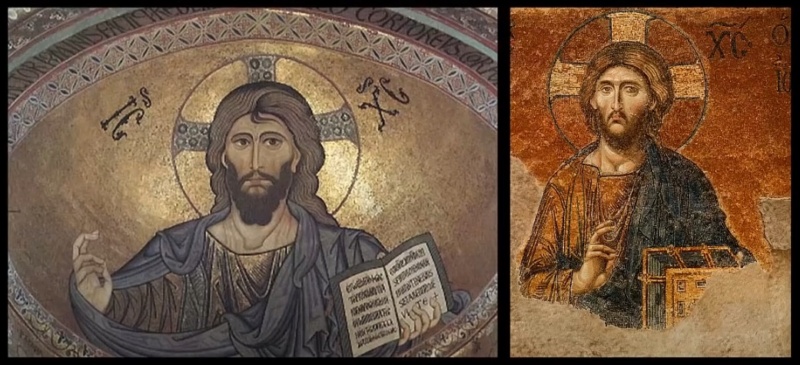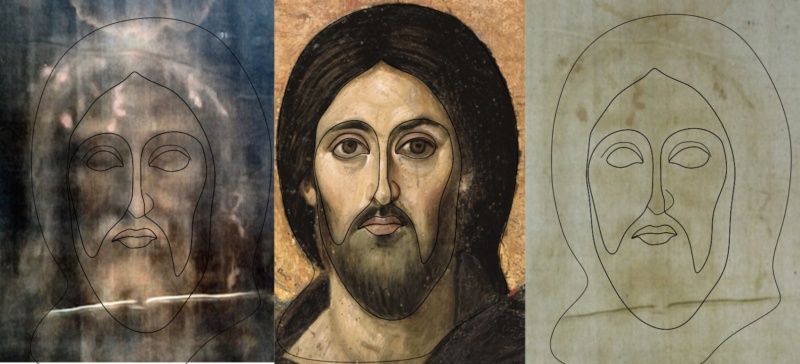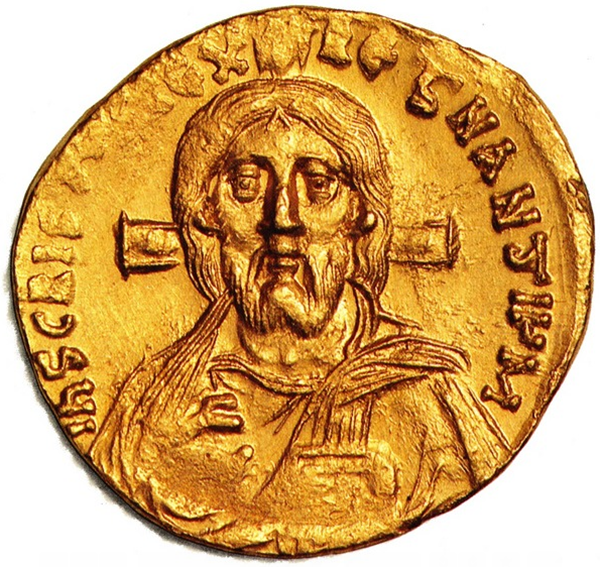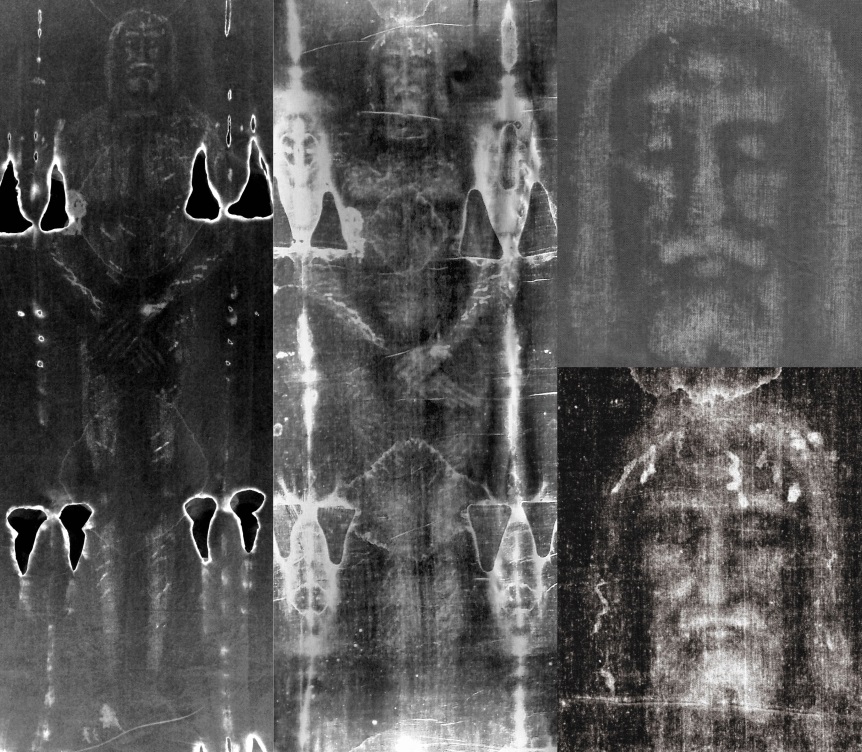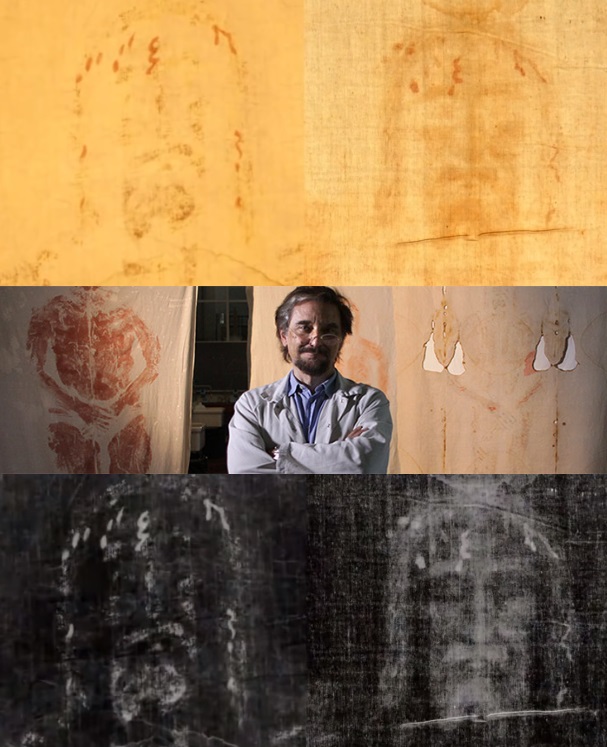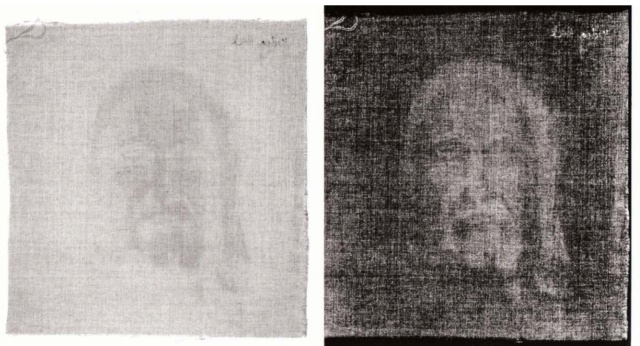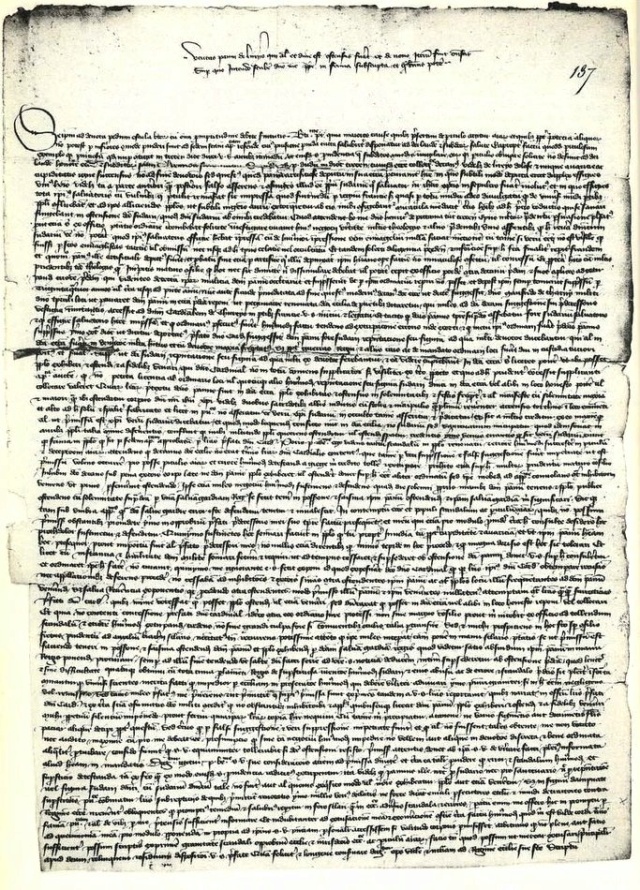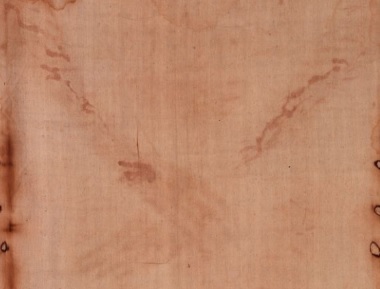The decree of the 70 sevens
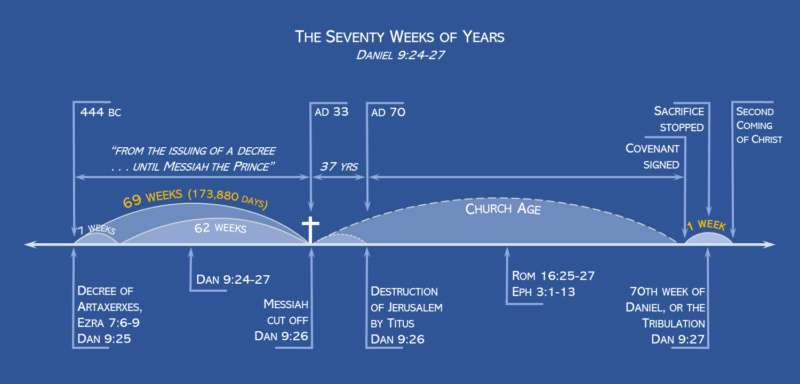
JOHN F. WALVOORD (2011): According to Daniel 9:24, six major events characterize the 490 years: (1) “to finish transgression”; (2) “to put an end to sin”; (3) “to atone for wickedness”; (4) “to bring in everlasting righteousness”; (5) “to seal up vision and prophecy”; and (6) “to anoint the most holy” (v. 24). As none of the six achievements were explained, it leaves the expositor to find a plausible explanation.
The accomplishment defined as “the finished transgression” most probably refers to Israel’s tendency to apostasy, which must be brought to a close as Israel is brought to restoration and spiritual revival at the time of the second coming of Christ. The objective to “put an end to sin” may be understood either as bringing sin to its point of forgiveness or it could mean bringing sin to its final judgment. The third achievement, “to atone for wickedness,” refers both to the death of Christ on the cross, which is the basis for all grace, and the application of this, especially to Israel, at the time of the second coming. The expression to atone literally means “to cover.” The death of Christ deals with sin in the final way that the sacrifices of the Old Testament could only illustrate temporarily. When Christ died on the cross, He brought in permanent reconciliation for those who would turn to Him in faith (2 Cor. 5:19). The fourth achievement, “to bring in everlasting righteousness,” was made possible by the death of Christ on the cross. The application of this to Israel individually and nationally relates to the second coming. As stated in Jeremiah 23:5–6, “‘The days are coming,’ declares the LORD, ‘when I will raise up to David a righteous Branch, a King who will reign wisely and do what is just and right in the land. In His days Judah will be saved and Israel will live in safety. This is the name by which he will be called: The LORD Our Righteousness.’” The time of this is the second coming, the same time that David will be resurrected to be a regent under Christ (30:9). Righteousness is one of the outstanding characteristics of the millennial kingdom in contrast to previous dispensations. The fifth objective of the 490 years is “to seal up vision and prophecy.” This expression refers to completion of the inspired Bible with the writing of the New Testament. The figure of “seal” refers to the sealing of a letter after it is completed and closed and then rendered safe by the seal. In like manner, God has completed the inspiration of the Bible, and no additional books will be written. The sixth achievement, “to anoint the most holy,” has brought a variety of interpretations. Some relate it to the dedication of the temple built by Zerubbabel (516 BC); others relate it to the sanctification of the temple altar in the Maccabean period after it had been desecrated by Antiochus Epiphanes (165 BC) (cf. 1 Macc. 4:52–56), or in the distant future to the dedication of the New Jerusalem (Rev. 21:1–27). Still others refer it to the millennial temple described by Ezekiel (Ezek. 40–42). Because the prophecy is not entirely clear, probably the best conclusion is that its complete fulfillment refers to the New Jerusalem, which will be God’s temple in eternity. Because the other items of prophecy concluded with the second coming, there was no clear event at that time relating to the temple. The anointing of the Most Holy will, however, be in keeping with other facets of the 490 years that have to do with judgment of sin, atonement, forgiveness, and spiritual restoration.
First Seven Years: The 490 years is divided into three parts: First, seven times seven, or a forty-nine-year period, then sixty-two times seven, or 434 years, and then the final seventieth seven, or the last seven years. According to verse 25, in the first seven sevens the streets and a trench will be built in times of trouble. This period of forty-nine years described the aftermath of Nehemiah’s building the wall of Jerusalem and requiring one out of ten in Israel to build a house in Jerusalem, which was fulfilled in the fifty years after the building of the wall. This was in complete fulfillment of the first seven times seven years.
Next Sixty-Two Sevens, 434 Years: The second segment of sixty-two sevens, or 434 years, was added to the first forty-nine years, bringing the total to 483 years.
Events between Sixty-Nine and Seventy Sevens In this period the Anointed One, or the Messiah, is born and is cut off after the conclusion of the 483rd year as stated in verse 26: “After the sixty-two ‘sevens,’ the Anointed One will be cut off and will have nothing.” A further prophecy is given of an event after the sixty-ninth seven and before the seventieth seven: “The people of the ruler who will come will destroy the city and the sanctuary. The end will come like a flood: War will continue until the end, and desolations have been decreed” (v. 26). Two major events mark the difference between the ending of the sixty-ninth seven and the beginning of the seventieth seven, meaning that the Messiah would be cut off approximately AD 33 and that the city of Jerusalem would be destroyed in AD 70. Obviously, if the fulfillment of the last seven years immediately followed the preceding period, there would be no time in which to consider the destruction of Jerusalem as part of the fulfillment, which would precede the last seven years. Again, a literal interpretation, as held by premillenarians, is preferable to the amillennial explanation that this has already been fulfilled in one sense or another. The end came for Jerusalem in its destruction in AD 70, and following that, war continues with its desolations as history has confirmed.
Seventieth Seven: Is related to end times and events, that have yet to happen, and will not be treated closer here. 30
Daniel was next told by Gabriel that the 70 sevens are to accomplish six purposes.
1. The first is to finish transgression. The Hebrew word translated “to finish” means “to restrain firmly,” “to restrain completely” or “to bring to completion.”
2. The second purpose of the 70 sevens is to make an end of sins. The Hebrew word translated “to make an end” literally means “to seal up” or “to shut up in prison.”
3. The third purpose is to make a reconciliation for iniquity. The Hebrew word translated “to make reconciliation” is “kaphar,” which has the same root meaning as the word “kippur,” as in Yom Kippur. The word “kaphar” literally means “to make atonement.”
4. The fourth purpose of the 70 sevens is to bring in everlasting righteousness. More literally this could be translated “to bring in an age of righteousness,”
5. The fifth purpose is to seal up vision and prophecy. Here Daniel used a word that means “to shut up.” So “to seal up” means to cause a cessation or to completely fulfill. Thus, vision and prophecy are to be completely fulfilled.” Vision” is a reference to oral prophecy, while “prophecy” refers to written prophecy. Both oral and written prophecy will cease
6. The final purpose of the 70 sevens is to anoint the most holy. A better translation here would be “to anoint a most holy place.” This is a reference to the Jewish temple which is to be rebuilt when Messiah comes.
DAVID J. HAMSTRA (2018): For Christians who interpret the seventy weeks of Daniel 9:24–27 by correlating the coming of the messiah with the arrival of Jesus Christ, the question of whether Jesus could have been identified as the predicted messiah at the time of fulfillment is theologically significant given biblical claims of prophetic intelligibility. There is a consensus among scholars affirming the view that interpretation of the seventy weeks prophecy led to a climate of messianic expectation among certain sectors of first-century Jewish society. This position is supported by the explicit connection of the seventy weeks to the anticipated arrival of a messiah in Melchizedek (11Q13). Josephus provides an independent line of circumstantial evidence that dates this expectation to the first century. This warrants the theological conclusion that the prophecy was, in principle, intelligible to those among whom it was fulfilled.7
A. Fruchtenbaum (2018): Daniel 9:24a: The angel Gabriel’s prophecy to Daniel began with the words, “Seventy sevens are decreed upon thy people and upon thy holy city…”
Many English versions have translated the phrase to read “seventy weeks.” But this translation is not totally accurate and has caused some confusion about the meaning of the passage. Most Jews know the Hebrew for “weeks” because of the observance of the Feast of Weeks, and that Hebrew word is shavuot. However, the word that appears in the Hebrew text is shavuim, which means “sevens.” The word refers to a “seven” of anything, and the context determines the content of the seven.
Here it is obvious Daniel had been thinking in terms of years—specifically the 70 years of captivity. Daniel had assumed that the captivity would end after 70 years and that the kingdom would be established after 70 years. But here Gabriel was using a play upon words in the Hebrew text, pointing out that insofar as Messiah’s kingdom was concerned, it was not “70 years,” but “70 sevens of years,” a total of 490 years (70 times seven).
“Times of the Gentiles”
This period of 490 years had been “decreed” over the Jewish people and over the holy city of Jerusalem. The Hebrew word translated “decreed” literally means “to cut off” or “to determine.” In chapters 2, 7 and 8, God revealed to Daniel the course of future world history in which gentiles would have a dominant role over the Jewish people. This lengthy period, which began with the Babylonian Empire to continue until the establishment of Messiah’s kingdom, is for that reason often referred to as the “Times of the Gentiles.” Now the prophet was told that a total of 490 years was to be “cut out” of the Times of the Gentiles, and a 490-year period had been “determined” or “decreed” for the accomplishment of the final restoration of Israel and the establishment of Messiah’s kingdom.
The focus of the program of the 70 sevens was “thy people and…thy holy city.” The “people” were Daniel’s people, the Jewish people, and the city was Daniel’s city, Jerusalem. Though he had spent the vast majority of his life in the city of Babylon, Jerusalem was still Daniel’s city. For Jews, whether they are in the land or outside the land, their city is always Jerusalem and not any other.8
Neverthirsty: The Hebrew word for “weeks” is sabua and it means a “period of seven” and can refer to seven days, weeks or years. In this passage sabua refers to “seven years” or a heptad. Today there is wide agreement among many scholars that this is the correct interpretation of sabua. This interpretation is supported by Daniel 9:2, where we are told that Daniel was reading the scroll of Jeremiah and discovered that the time was approaching for the Jewish captives to return to Canaan. Daniel 1 it tells us that Nebuchadnezzar had taken a group of Jewish captives from Canaan to Babylon in 604 B.C. Daniel 9:1-2 reveals that almost 70 years had elapsed since then, and it was about time for them to return to Canaan. God had allowed the captives to be deported because of the sins of their kings. The length of the deportation was determined by the number of sabbatical years that the Israelites had failed to observe (2 Chronicles 36:21; Jer. 34:12-22). God had commanded them to allow the land to be dormant every seventh year (Leviticus 25:4-5, 27-46). But they had failed to observe the command for seventy sabbath years, or 490 years. Consequently, God decreed that their captivity would last for 70 years. Consequently, Daniel would have understood the reference to “seventy weeks” in the prophecy to be 490 years.
Also, Genesis 29:20-30 makes it clear that it was customary among the ancient Jewish people to refer to a “week” as another way to refer to seven years. Genesis 29:20 tells us that Jacob served Laban for seven years in order to marry Rachel. Unfortunately, Laban was dishonest and refused to give Rachel to Jacob on his wedding night, even though she was the one for whom he had labored. Instead Laban gave Jacob his oldest daughter Leah. Jacob did not discover the problem until the morning. If we look at verse 30, we discover that Laban offers Rachel, his younger daughter, to Jacob if he will serve another “week.” Then at the end of the verse we are told that this “week” is “seven years.” This example demonstrates that the term “week” did mean “seven years” in the proper context.
Therefore, we conclude along with many others, ancient and modern, that the expression “seventy weeks” refers to “seventy periods of seven years” or “490 years.” Therefore, Daniel 9:24 tells us that 70 weeks or 490 years had to elapse before sin would be eliminated and everlasting righteousness would occur. That means the end of the world.
Sixthy-Nine Week Prophecy
The prophecy of 70 weeks contains three prophecies. The first prophecy is the focus of this study. It refers to a period of 69 weeks. The last two prophecies are about the tribulation and the end of the world.
Daniel 9:25-26a (NASB): So you are to know and discern that from the issuing of a decree to restore and rebuild Jerusalem until Messiah the Prince there will be seven weeks and sixty-two weeks; it will be built again, with plaza and moat, even in times of distress. Then after the sixty-two weeks the Messiah will be cut off and have nothing . . .
In order to understand this prophecy, we will perform three calculations starting with the end date and concluding with the start date. That is, we will determine the end date or the fulfillment date of the prophecy. Next, we will determine the length of time predicted by the prophecy between the start and end dates. Then we will determine the start date of the prophecy. 6
Neverthirsty: Daniel 9:25b: The 70 sevens are divided into three separate units—seven sevens, 62 sevens and one seven. During the first time period (49 years) Jerusalem would be “built again, with street and moat, even in troublous times.” The second block of time (62 sevens, a total of 434 years) immediately followed the first for a total of 69 sevens, or 483 years.
It is at this point that we are told what the ending point is of the 69 sevens: “unto Messiah the Prince.” As clearly as Daniel could have stated it, he taught that 483 years after the decree to rebuild Jerusalem had been issued, Messiah would be here on earth.
The obvious conclusion is this: If Messiah was not on earth 483 years after a decree was issued to rebuild Jerusalem, then Daniel was a false prophet and his book has no business being in the Hebrew Scriptures. But if Daniel was correct and his prophecy was fulfilled, then who was the Messiah of whom he spoke? 6
Start Date of The Prophecy
At this point we have determined the end date of the prophecy and the time between the start and end dates of the prophecy. Now we want to determine the start date of the prophecy. This will be done in two steps. First, we will examine three decrees in the Old Testament, one of which is the official start date of the prophecy. Second, we will examine the month given in one of those decrees to determine the precise time of the decree.
Which Decree Is Correct?
The first step in determining the start of the prophecy is to determine which decree Daniel 9:25 refers to.
Daniel 9:25 (NASB): So you are to know and discern that from the issuing of a decree to restore and rebuild Jerusalem until Messiah the Prince there will be seven weeks and sixty-two weeks; it will be built again, with plaza and moat, even in times of distress.
G.Gunn (2010): Jesus referred to the abomination of Daniel 9:27 as the primary sign of the Great Tribulation (Matt 24:15), thus harkening the nearness of the ―Son of Man coming on the clouds of heaven with power and great glory‖ (Matt 24:30). There is nearly universal agreement among conservative interpreters that שִי ח ???? is a reference to the Lord Jesus Christ. Assuming that the author of the book of Daniel is the same as the literally historical ―Daniel‖ described in that book, the conservative interpreter understands this prophecy from the perspective of someone living near the end of the Babylonian captivity before the return from exile. From this perspective, Daniel is seen as receiving a message from God that entails genuine predictive prophecy. The future deliverance envisioned in the prophecy focuses on the coming of Israel‘s Messiah, the Lord Jesus Christ. If the terminus ad quem of the sixty-nine heptads is to be found at some point in the life and ministry of Jesus, the terminus a quo should be found some 483 years (7 x 69) before the first advent. This is the basic reasoning followed by nearly all conservative interpreters. Four Persian decrees have been identified as potentially meeting the requirements of this terminus a quo:
1. Cyrus‘ Decree, 539 BC – 2 Chronicles 36:22-23; Ezra 1:1-4; 6:3-5
2. Darius‘ Decree, 519/18 BC – Ezra 5:3-17
3. Artaxerxes‘ Decree to Ezra, 457 BC – Ezra 7:11-26
4. Artaxerxes‘ ―Decree‖ to Nehemiah, 445/4 BC – Nehemiah 2:1-8 11

Cyrus’ Decree of 538 B.C.
Neverthirsty: The decree of 538 B.C. was issued by Cyrus, the first king of Persia, during his first year as king (2 Chronicles 36:22-23). It should be noted that the decree as described in 2 Chronicles 36:22-23 does not include a directive to rebuild the city but only the temple. To believe that the city is included assumes facts not stated in the text.
Some advocates claim that Isaiah 44:26-28 supports the view that Cyrus’ decree in Ezra 1:1-2; 6:3 included the rebuilding of Jerusalem.
Isaiah 44:28 (NASB): It is I who says of Cyrus, “He is My shepherd!
And he will perform all My desire.”
And he declares of Jerusalem, “She will be built,”
And of the temple, “Your foundation will be laid.”
But a careful examination of the verse reveals that Isaiah 44:28 only says that God refers to Cyrus as “My shepherd” and He will rebuild the city and the temple. The Holman Christian Standard Bible (HCSB) translated this verse more accurately,
Isaiah 44:28 (HCSB): Who says to Cyrus, “My shepherd,
he will fulfill all My pleasure”
and says to Jerusalem, “She will be rebuilt,”
and of the temple, “Its foundation will be laid.”
Note that God is declaring His actions and not the actions of King Cyrus. There is ambiguity in some translations.
Isaiah 45:13 is probably the strongest passage supporting the concept that Cyrus’ decree may have included the rebuilding of the city, but the questions must be asked: What does “rebuild the city” mean, and when was the rebuilding to occur? At first this might appear to be an attempt to avoid the obvious; but it is very clear in Nehemiah 2:11-17 that the temple was built first and not the city of Jerusalem. Nehemiah 2:11-17 is important since it describes the city during the reign of King Artaxerxes who ruled after Cyrus (Nehemiah 2:1). In the passage we are told that the city is desolate and the walls are “broken down.” The Hebrew text in Nehemiah 2:13 states explicitly that the walls and gates were in utter ruin. Nehemiah 2:17 is also very significant since it states that Jerusalem is desolate and the gates were burned by fire. The Hebrew word for “is desolate” can also be translated as “to lay waste” or “to lay in ruins.” If Cyrus’ decree included rebuilding the city and the walls, why is the city in ruins during Artaxerxes’ reign? It is very possible that Isaiah 45:13 simply means that during the Persian rule the city of Jerusalem will be rebuilt. Therefore, Cyrus’ decree is rejected.
Artaxerxes’ Decree of 457 B.C.
Artaxerxes I reigned after Cyrus from 464 to 424 B.C. He was the sixth Persian king. Artaxerxes’ decree of 457 B.C. as given in Ezra 7:11-27 does not refer to a rebuilding of any city but to a decree allowing Ezra and others to return to Jerusalem for the purpose of worship. Some have claimed that Ezra 9:9 indicates that the 457 B.C. decree did include the rebuilding of the city, but once again a careful examination reveals that Ezra had a thankful heart for the Persian kings allowing them to rebuild the temple.
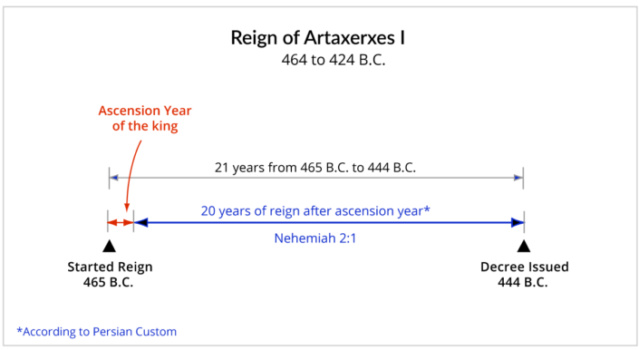
Artaxerxes’ Decree of 444 B.C. is the most plausible date
JOHN F. WALVOORD (2011): The most plausible explanation is the 444 BC date because this works out precisely to the fulfillment of the prophecy and also coincides with the actual rebuilding of the city. This interpretation provides the most literal explanation without disregarding some of the specifics of the prophecy. If 444 BC is accepted as the beginning date of the 490 years, the 483 years would culminate in the year AD 33 where recent scholarship
has placed the probable time of the death of Christ. In interpretation the Bible authorizes the use of the prophetic year of 360 days. The 360 days are multiplied by 483 years, or the 490 years minus seven. The computation comes out at AD 33. The concept that the prophetic year is 360 days is confirmed by the 1,260 days (Rev. 11:3; 12:6), with the forty-two months (11:2; 13:5), and with a time, times and half a time, or three and a half years (Dan. 7:25; 12:7; Rev. 12:14). This interpretation permits the 483 years to run their course. The intervening time between the 483 years and the last seven years was provided in the prophecy itself as would be seen in examination of Daniel 9:26–27.30
Artaxerxes I issued another decree in 444 B.C. which is given in Nehemiah 2:1-8.
Nehemiah 2:1-8 (NASB): And it came about in the month Nisan, in the twentieth year of King Artaxerxes . . . And I said to the king, “If it pleases the king, and if your servant has found favor before you, send me to Judah, to the city of my fathers’ tombs, that I may rebuild it.” . . . And I said to the king, “If it please the king, let letters be given me for the governors of the provinces beyond the River, that they may allow me to pass through until I come to Judah, and a letter to Asaph the keeper of the king’s forest, that he may give me timber to make beams for the gates of the fortress which is by the temple, for the wall of the city, and for the house to which I will go. And the king granted them to me because the good hand of my God was on me.
Only Nehemiah 2:1-8 and the following verses within the book of Nehemiah provide solid evidence that this decree was issued for the purpose of rebuilding the city and the walls. Notice that Nehemiah 2:17 clearly states that the city was desolate.
Nehemiah 2:17 (NASB): Then I said to them, “You see the bad situation we are in, that Jerusalem is desolate and its gates burned by fire. Come, let us rebuild the wall of Jerusalem so that we will no longer be a reproach.”
Nehemiah 3 indicates that the Fish, Old, Valley, Refuse, Fountain, Water, Horse, East, Inspection, and Sheep gates and walls were all rebuilt. The rebuilding activity of the gates and walls are mentioned one by one. Nehemiah 4 describes the rebuilding of the wall and Nehemiah 6:15 says that the wall was finally completed. Then Nehemiah 11:1 tells us that the rest of the people were to be brought to the city so that it could be repaired.
Why would Artaxerxes issue another decree in 444 B.C. if one had already been issued in 538 B.C. or 457 B.C.? This implies that the 538 B.C. and 457 B.C. decrees were not edicts to restore and rebuild Jerusalem. Therefore, we must conclude that Nehemiah 2 and following chapters refer to the rebuilding of the city and the wall. In summary, Nehemiah 2:1-8 documents the decree of interest, the utter ruin of the city and dilapidated walls, and the rebuilding of the city and its walls.
What is the date of Artaxerxes’ decree recorded in Nehemiah 2:1-8? To answer the question, we will start by noting that Artaxerxes started ruling Persia in 465 B.C. Since Nehemiah 2:1 indicates the time is the 20th year of Artaxerxes we might assume that the date is 445 B.C. In reality the date is 444 B.C. since the Babylonians and Medo-Persians referred to a king’s first year as the ascension year. The date of 444 B.C. is correct since 445 B.C. was actually the king’s ascension year and should not be counted as part of the official reign of Artaxerxes.
Therefore, when Ezra says the decree was issued in the 20th year of King Artaxerxes, it is actually the 21st year in which Artaxerxes ruled the Persian empire or 444 B.C. It is also important to note that when the day of the month was not mentioned, it was customary to assume the first day of the month. Therefore, Artaxerxes issued the decree that Daniel 9:25 refers to for the restoration and rebuilding of the city of Jerusalem as 1 Nisan, 3317, in the Jewish calendar, or March 28, 444 B.C. in the Gregorian calendar or April 2, 444 B.C. in the Julian Calendar.
J. E. Walvoord (2012): Nehemiah 2:1–6. In 444 B.C. King Artaxerxes sent Nehemiah to Jerusalem. Nehemiah asked permission to go because he had heard that “the wall of Jerusalem is broken down, and its gates are destroyed by fire” (Neh. 1:3). Nehemiah specifically asked permission to go to “Judah, to the city of my fathers’ graves, that I may rebuild it” (2:5). This is the first and only royal decree granting permission to “restore and build Jerusalem” (Dan. 9:25). Accordingly, the best explanation for the terminus ad quo in Daniel 9:25 is the decree relating to the rebuilding of Jerusalem itself given in Nehemiah 2:1–6, about ninety years after the first captives returned and started building the temple. Many commentators identify this reference as the royal edict of Artaxerxes Longimanus, who reigned over Persia 465–425 B.C., and who not only commanded the rebuilding of Jerusalem in 444 B.C. but earlier had commissioned Ezra to return to Jerusalem in 457 B.C. (Ezra 7:11–26).54 The date 444 B.C. is based on the reference in Nehemiah 2:1.
Anderson has made a detailed study of a possible chronology for this period, beginning with the assumed date of 445 B.C. when the decree to Nehemiah was issued and culminating in A.D. 32 on the very day of Christ’s triumphal entry into Jerusalem shortly before His crucifixion. Anderson specifies that the seventy-sevens began on the first of Nisan (March 14) 445 B.C. and ended on the tenth of Nisan (April 6), A.D. 32.1
Dr. Thomas L. Constable (2022): The years of history that this book covers are 445-431 B.C., or perhaps a few years after that. In 445 B.C. (the twentieth year of Artaxerxes' reign, 1:1), Nehemiah learned of the conditions in Jerusalem that led him to request permission to return to Judah (2:5). He arrived in Jerusalem in 444 B.C. and within 52 days had completed the rebuilding of the city walls (6:15). 2
There is general agreement that Nehemiah reached Jerusalem in 444 B.C. during the twentieth year of Artaxerxes I. Archeological evidence has confirmed the Biblical information.
Frank M. Cross (1975): The dating of Nehemiah's mission to 445, the twentieth year of Artaxerxes I, has not been in serious dispute since the appearance of Sanballat in an Elephantine letter of 407 B.C. (The Elephantine Papyri and Ostraca consist of thousands of documents from the Egyptian border fortresses of Elephantine and Aswan) The new list of Sanballatids further confirms the fifth-century date, and finally the discovery of a silver bowl inscribed by "Qaynu son of Gasm [biblical Geeem, Gasmu],20k ing of Qedar," would appear to settle the matter finally. The script of the bowl cannot be dated later than 400 B.C., placing Geshem, Qaynu's father, precisely in the second half of the fifth century B.C 3
Nathan Jarrett (2021): Since Gabriel states that the Messiah will be cut off 69 weeks after “the going forth of the commandment to restore and to build Jerusalem” (v. 25), a significant variable that must be established is the date when said commandment took place. Historically, there has been competition between different dates as the starting point to Gabriel’s countdown. One possible option for the terminus a quo for Daniel's prophecy is the decree given by Artaxerxes I to rebuild the city of Jerusalem, which is recorded in Nehemiah 2:1-8:
And it came to pass in the month Nisan, in the twentieth year of Artaxerxes the king, that wine was before him: and I took up the wine, and gave it unto the king… And said unto the king, Let the king live forever: why should not my countenance be sad, when the city, the place of my fathers' sepulchers, lieth waste, and the gates thereof are consumed with fire? Then the king said unto me, For what dost thou make a request? So I prayed to the God of heaven. And I said unto the king, If it please the king, and if thy servant have found favor in thy sight, that thou wouldest send me unto Judah, unto the city of my fathers' sepulchers, that I may build it… Moreover, I said unto the king, If it pleases the king, let letters be given me to the governors beyond the river, that they may convey me over till I come into Judah; And a letter unto Asaph the keeper of the king's forest, that he may give me timber to make beams for the gates of the palace which appertained to the house, and for the wall of the city, and for the house that I shall enter into. And the king granted me, according to the good hand of my God upon me.
The text is transparent that the decree granted to Nehemiah by Artaxerxes I had the sole purpose of rebuilding the physical structure of the city of Jerusalem. This decree is impressively congruent with Daniel's prediction, as it notes that the building project will specifically pertain to "the wall of the city" (Neh. 2:8; cf. Dan. 9:25). Nehemiah even goes into great detail about the wall's construction and how enemy nations tried to hinder the builders' success (cf. Neh. 4:6-17). Nevertheless, “the wall was finished in in the twenty and fifth day of the month Elul, in fifty and two days” (Neh. 6:15). The Hebrew word translated as “wall” in Daniel 9:25 in the KJV, which is “וץּחר ,is more difficult to define. It is a passive participle of חרץ meaning ‘to cut, to sharpen, to decide.’” Regardless if one adheres to the popular scholarly position that וץּחר should actually be translated as “moat,” this decree is still the only option which corresponds with Daniel’s prediction. The other two decrees focus solely on the temple, hence the city of Jerusalem “was certainly not refortified, as the prophecy requires (‘with plaza and moat’). The first official decree for refortifying Jerusalem and building its walls was issued by Artaxerxes I… (Neh. 2:4-8 ).” Though proponents of the 457 BC date may claim that Artaxerxes' decree in 444 BC is an extension of his former announcement, this argument is simply unfounded. In fact, it is irrational to believe said claim because Nehemiah had to personally ask Artaxerxes for permission to rebuild the city 13 years after his former decree. Two noteworthy arguments commonly used in opposition to the 444 BC date concern (1) the use of 360-day years and (2) the insertion of a gap between the 69th and the 70th week. Proponents of the first objection must provide a reason as to why Genesis and (especially) Revelation would seem to incorporate 360-day years but Daniel would not. Until a valid argument is presented, the most hermeneutically consistent position is to infer that the prophetic years in Daniel are congruent with those in Revelation. Furthermore, adding 483 prophetic years to the one decree that actually references the rebuilding of Jerusalem’s walls and overall structure results in a miraculous conclusion. The mathematical and textual support for using 360-day years is simply too overwhelming to ignore. Concerning the presence of a gap between the 69th and 70th weeks, it should be noted that there are other instances of prophecy which contain gaps that would be unable to discern if it were not for Yahweh’s progressive revelation. For example, Luke records that near the beginning of Jesus’ earthly ministry, He went into a synagogue and read Isaiah 61:1-2 (cf. Luke 4:16-20). The passage in Isaiah discusses a character whom “the Spirit of the Lord God is upon” (Isa. 61:1) and Jesus identifies Himself as said character. However, Jesus did something remarkable while reading from Isaiah – He stopped mid-sentence of verse 2 and then “he closed the book, and he gave it again to the minister, and sat down” (Luke 4:20). Instead of stating that it was His job “to proclaim the acceptable year of the Lord, and the day of vengeance of our God” (Isa 61:2), Jesus stated that His purpose was only “to preach the acceptable year of the Lord” (Luke 4:19). Though a plain reading of Isaiah 61 does not imply a gap of time in the middle of verse 2, Jesus’ foreknowledge allowed Him to make such a distinction. Hence, Jesus deliberately cut the verse in half because while His first coming was concerned with God’s love and forgiveness (cf. John 3:16-17, 12:47), His second coming will execute God’s judgment and wrath (cf. Matt. 24:30; 2 Thess. 1:7-9). New Testament scholar David Garland acknowledges that “the reference to the day of vengeance in Isa 61:2b is absent… Jesus heralds that now is the time when God’s long-awaited promises are being fulfilled.” There are also other examples of these types of prophecies (cf. Isa. 9:6; Zech. 9:9-10), demonstrating that it is not unfounded to interpret a gap of time between the 69th and 70th week if the evidence supports such a view.
Artaxerxes' decree in Nisan of 444 BC is the only option that truly fits the description of Daniel's prophecy. Though Nehemiah did not state the exact day in the month of Nisan when the decree was issued, his description at least provides a narrow range of dates that can be established. Aramaic papyri which were excavated from the city of Assuan appear to indicate that in 446 BC, the Jewish months Tishri and Kislev began on September 19 and November 15, respectively. In 1942, historians Richard Parker and Waldo Dubberstein attempted to reconstruct the Jewish calendar of the fifth century BC by extrapolating data from the materials they had available to them at the time. However, they mistakenly assigned Tishri and Kislev of 446 BC as occurring one month later than what the ancient papyri from Assuan indicate. If the calendar constructed by Parker and Dubberstein is adjusted to correlate with the Aramaic papyri by being shifted backward one month, Nisan of 444 BC would begin on March 4. This is consistent with astronomical calculations which show that a new moon would have been visible after 10 PM on March 4, so a Jewish month would have begun on or shortly after this date. Hence, both lunar and historical data support a start date for Nisan of 444 BC to be approximately March 4. 4
Critical Issue With Hebrew Calendar
Now we must discuss a critical issue related to the Jewish calendar. That issue is how was Nisan 1 determined in the Babylonian and Hebrew calendar? The heart of the issue depends upon how the calendar was corrected to remove inaccuracies in the calendar. Since the Jewish calendar was based on the orbit of the moon and not the orbit of the sun, the Jewish calendar was a lunar calendar. What follows next is a necessary and important brief history lesson on the Jewish calendar.
Hebrew Calendar Before Babylonian Invasion
Before the Babylonian invasion of the Kingdom of Judah in 605 B.C. the Jewish calendar had twelve months and the first month of their calendar year was called Abib (Exodus 12:2; 13:4; 34:18; 40:2; Deuteronomy 16:1). The second month of the calendar was called Ziv (1 Kings 6:1, 37). The seventh month was called Ethanim (1 Kings 8:2). Bul was the eighth month of the calendar (1 Kings 6:38).

JOHN F. WALVOORD (2011): According to Daniel 9:24, six major events characterize the 490 years: (1) “to finish transgression”; (2) “to put an end to sin”; (3) “to atone for wickedness”; (4) “to bring in everlasting righteousness”; (5) “to seal up vision and prophecy”; and (6) “to anoint the most holy” (v. 24). As none of the six achievements were explained, it leaves the expositor to find a plausible explanation.
The accomplishment defined as “the finished transgression” most probably refers to Israel’s tendency to apostasy, which must be brought to a close as Israel is brought to restoration and spiritual revival at the time of the second coming of Christ. The objective to “put an end to sin” may be understood either as bringing sin to its point of forgiveness or it could mean bringing sin to its final judgment. The third achievement, “to atone for wickedness,” refers both to the death of Christ on the cross, which is the basis for all grace, and the application of this, especially to Israel, at the time of the second coming. The expression to atone literally means “to cover.” The death of Christ deals with sin in the final way that the sacrifices of the Old Testament could only illustrate temporarily. When Christ died on the cross, He brought in permanent reconciliation for those who would turn to Him in faith (2 Cor. 5:19). The fourth achievement, “to bring in everlasting righteousness,” was made possible by the death of Christ on the cross. The application of this to Israel individually and nationally relates to the second coming. As stated in Jeremiah 23:5–6, “‘The days are coming,’ declares the LORD, ‘when I will raise up to David a righteous Branch, a King who will reign wisely and do what is just and right in the land. In His days Judah will be saved and Israel will live in safety. This is the name by which he will be called: The LORD Our Righteousness.’” The time of this is the second coming, the same time that David will be resurrected to be a regent under Christ (30:9). Righteousness is one of the outstanding characteristics of the millennial kingdom in contrast to previous dispensations. The fifth objective of the 490 years is “to seal up vision and prophecy.” This expression refers to completion of the inspired Bible with the writing of the New Testament. The figure of “seal” refers to the sealing of a letter after it is completed and closed and then rendered safe by the seal. In like manner, God has completed the inspiration of the Bible, and no additional books will be written. The sixth achievement, “to anoint the most holy,” has brought a variety of interpretations. Some relate it to the dedication of the temple built by Zerubbabel (516 BC); others relate it to the sanctification of the temple altar in the Maccabean period after it had been desecrated by Antiochus Epiphanes (165 BC) (cf. 1 Macc. 4:52–56), or in the distant future to the dedication of the New Jerusalem (Rev. 21:1–27). Still others refer it to the millennial temple described by Ezekiel (Ezek. 40–42). Because the prophecy is not entirely clear, probably the best conclusion is that its complete fulfillment refers to the New Jerusalem, which will be God’s temple in eternity. Because the other items of prophecy concluded with the second coming, there was no clear event at that time relating to the temple. The anointing of the Most Holy will, however, be in keeping with other facets of the 490 years that have to do with judgment of sin, atonement, forgiveness, and spiritual restoration.
First Seven Years: The 490 years is divided into three parts: First, seven times seven, or a forty-nine-year period, then sixty-two times seven, or 434 years, and then the final seventieth seven, or the last seven years. According to verse 25, in the first seven sevens the streets and a trench will be built in times of trouble. This period of forty-nine years described the aftermath of Nehemiah’s building the wall of Jerusalem and requiring one out of ten in Israel to build a house in Jerusalem, which was fulfilled in the fifty years after the building of the wall. This was in complete fulfillment of the first seven times seven years.
Next Sixty-Two Sevens, 434 Years: The second segment of sixty-two sevens, or 434 years, was added to the first forty-nine years, bringing the total to 483 years.
Events between Sixty-Nine and Seventy Sevens In this period the Anointed One, or the Messiah, is born and is cut off after the conclusion of the 483rd year as stated in verse 26: “After the sixty-two ‘sevens,’ the Anointed One will be cut off and will have nothing.” A further prophecy is given of an event after the sixty-ninth seven and before the seventieth seven: “The people of the ruler who will come will destroy the city and the sanctuary. The end will come like a flood: War will continue until the end, and desolations have been decreed” (v. 26). Two major events mark the difference between the ending of the sixty-ninth seven and the beginning of the seventieth seven, meaning that the Messiah would be cut off approximately AD 33 and that the city of Jerusalem would be destroyed in AD 70. Obviously, if the fulfillment of the last seven years immediately followed the preceding period, there would be no time in which to consider the destruction of Jerusalem as part of the fulfillment, which would precede the last seven years. Again, a literal interpretation, as held by premillenarians, is preferable to the amillennial explanation that this has already been fulfilled in one sense or another. The end came for Jerusalem in its destruction in AD 70, and following that, war continues with its desolations as history has confirmed.
Seventieth Seven: Is related to end times and events, that have yet to happen, and will not be treated closer here. 30
Daniel was next told by Gabriel that the 70 sevens are to accomplish six purposes.
1. The first is to finish transgression. The Hebrew word translated “to finish” means “to restrain firmly,” “to restrain completely” or “to bring to completion.”
2. The second purpose of the 70 sevens is to make an end of sins. The Hebrew word translated “to make an end” literally means “to seal up” or “to shut up in prison.”
3. The third purpose is to make a reconciliation for iniquity. The Hebrew word translated “to make reconciliation” is “kaphar,” which has the same root meaning as the word “kippur,” as in Yom Kippur. The word “kaphar” literally means “to make atonement.”
4. The fourth purpose of the 70 sevens is to bring in everlasting righteousness. More literally this could be translated “to bring in an age of righteousness,”
5. The fifth purpose is to seal up vision and prophecy. Here Daniel used a word that means “to shut up.” So “to seal up” means to cause a cessation or to completely fulfill. Thus, vision and prophecy are to be completely fulfilled.” Vision” is a reference to oral prophecy, while “prophecy” refers to written prophecy. Both oral and written prophecy will cease
6. The final purpose of the 70 sevens is to anoint the most holy. A better translation here would be “to anoint a most holy place.” This is a reference to the Jewish temple which is to be rebuilt when Messiah comes.
DAVID J. HAMSTRA (2018): For Christians who interpret the seventy weeks of Daniel 9:24–27 by correlating the coming of the messiah with the arrival of Jesus Christ, the question of whether Jesus could have been identified as the predicted messiah at the time of fulfillment is theologically significant given biblical claims of prophetic intelligibility. There is a consensus among scholars affirming the view that interpretation of the seventy weeks prophecy led to a climate of messianic expectation among certain sectors of first-century Jewish society. This position is supported by the explicit connection of the seventy weeks to the anticipated arrival of a messiah in Melchizedek (11Q13). Josephus provides an independent line of circumstantial evidence that dates this expectation to the first century. This warrants the theological conclusion that the prophecy was, in principle, intelligible to those among whom it was fulfilled.7
A. Fruchtenbaum (2018): Daniel 9:24a: The angel Gabriel’s prophecy to Daniel began with the words, “Seventy sevens are decreed upon thy people and upon thy holy city…”
Many English versions have translated the phrase to read “seventy weeks.” But this translation is not totally accurate and has caused some confusion about the meaning of the passage. Most Jews know the Hebrew for “weeks” because of the observance of the Feast of Weeks, and that Hebrew word is shavuot. However, the word that appears in the Hebrew text is shavuim, which means “sevens.” The word refers to a “seven” of anything, and the context determines the content of the seven.
Here it is obvious Daniel had been thinking in terms of years—specifically the 70 years of captivity. Daniel had assumed that the captivity would end after 70 years and that the kingdom would be established after 70 years. But here Gabriel was using a play upon words in the Hebrew text, pointing out that insofar as Messiah’s kingdom was concerned, it was not “70 years,” but “70 sevens of years,” a total of 490 years (70 times seven).
“Times of the Gentiles”
This period of 490 years had been “decreed” over the Jewish people and over the holy city of Jerusalem. The Hebrew word translated “decreed” literally means “to cut off” or “to determine.” In chapters 2, 7 and 8, God revealed to Daniel the course of future world history in which gentiles would have a dominant role over the Jewish people. This lengthy period, which began with the Babylonian Empire to continue until the establishment of Messiah’s kingdom, is for that reason often referred to as the “Times of the Gentiles.” Now the prophet was told that a total of 490 years was to be “cut out” of the Times of the Gentiles, and a 490-year period had been “determined” or “decreed” for the accomplishment of the final restoration of Israel and the establishment of Messiah’s kingdom.
The focus of the program of the 70 sevens was “thy people and…thy holy city.” The “people” were Daniel’s people, the Jewish people, and the city was Daniel’s city, Jerusalem. Though he had spent the vast majority of his life in the city of Babylon, Jerusalem was still Daniel’s city. For Jews, whether they are in the land or outside the land, their city is always Jerusalem and not any other.8
Neverthirsty: The Hebrew word for “weeks” is sabua and it means a “period of seven” and can refer to seven days, weeks or years. In this passage sabua refers to “seven years” or a heptad. Today there is wide agreement among many scholars that this is the correct interpretation of sabua. This interpretation is supported by Daniel 9:2, where we are told that Daniel was reading the scroll of Jeremiah and discovered that the time was approaching for the Jewish captives to return to Canaan. Daniel 1 it tells us that Nebuchadnezzar had taken a group of Jewish captives from Canaan to Babylon in 604 B.C. Daniel 9:1-2 reveals that almost 70 years had elapsed since then, and it was about time for them to return to Canaan. God had allowed the captives to be deported because of the sins of their kings. The length of the deportation was determined by the number of sabbatical years that the Israelites had failed to observe (2 Chronicles 36:21; Jer. 34:12-22). God had commanded them to allow the land to be dormant every seventh year (Leviticus 25:4-5, 27-46). But they had failed to observe the command for seventy sabbath years, or 490 years. Consequently, God decreed that their captivity would last for 70 years. Consequently, Daniel would have understood the reference to “seventy weeks” in the prophecy to be 490 years.
Also, Genesis 29:20-30 makes it clear that it was customary among the ancient Jewish people to refer to a “week” as another way to refer to seven years. Genesis 29:20 tells us that Jacob served Laban for seven years in order to marry Rachel. Unfortunately, Laban was dishonest and refused to give Rachel to Jacob on his wedding night, even though she was the one for whom he had labored. Instead Laban gave Jacob his oldest daughter Leah. Jacob did not discover the problem until the morning. If we look at verse 30, we discover that Laban offers Rachel, his younger daughter, to Jacob if he will serve another “week.” Then at the end of the verse we are told that this “week” is “seven years.” This example demonstrates that the term “week” did mean “seven years” in the proper context.
Therefore, we conclude along with many others, ancient and modern, that the expression “seventy weeks” refers to “seventy periods of seven years” or “490 years.” Therefore, Daniel 9:24 tells us that 70 weeks or 490 years had to elapse before sin would be eliminated and everlasting righteousness would occur. That means the end of the world.
Sixthy-Nine Week Prophecy
The prophecy of 70 weeks contains three prophecies. The first prophecy is the focus of this study. It refers to a period of 69 weeks. The last two prophecies are about the tribulation and the end of the world.
Daniel 9:25-26a (NASB): So you are to know and discern that from the issuing of a decree to restore and rebuild Jerusalem until Messiah the Prince there will be seven weeks and sixty-two weeks; it will be built again, with plaza and moat, even in times of distress. Then after the sixty-two weeks the Messiah will be cut off and have nothing . . .
In order to understand this prophecy, we will perform three calculations starting with the end date and concluding with the start date. That is, we will determine the end date or the fulfillment date of the prophecy. Next, we will determine the length of time predicted by the prophecy between the start and end dates. Then we will determine the start date of the prophecy. 6
Neverthirsty: Daniel 9:25b: The 70 sevens are divided into three separate units—seven sevens, 62 sevens and one seven. During the first time period (49 years) Jerusalem would be “built again, with street and moat, even in troublous times.” The second block of time (62 sevens, a total of 434 years) immediately followed the first for a total of 69 sevens, or 483 years.
It is at this point that we are told what the ending point is of the 69 sevens: “unto Messiah the Prince.” As clearly as Daniel could have stated it, he taught that 483 years after the decree to rebuild Jerusalem had been issued, Messiah would be here on earth.
The obvious conclusion is this: If Messiah was not on earth 483 years after a decree was issued to rebuild Jerusalem, then Daniel was a false prophet and his book has no business being in the Hebrew Scriptures. But if Daniel was correct and his prophecy was fulfilled, then who was the Messiah of whom he spoke? 6
Start Date of The Prophecy
At this point we have determined the end date of the prophecy and the time between the start and end dates of the prophecy. Now we want to determine the start date of the prophecy. This will be done in two steps. First, we will examine three decrees in the Old Testament, one of which is the official start date of the prophecy. Second, we will examine the month given in one of those decrees to determine the precise time of the decree.
Which Decree Is Correct?
The first step in determining the start of the prophecy is to determine which decree Daniel 9:25 refers to.
Daniel 9:25 (NASB): So you are to know and discern that from the issuing of a decree to restore and rebuild Jerusalem until Messiah the Prince there will be seven weeks and sixty-two weeks; it will be built again, with plaza and moat, even in times of distress.
G.Gunn (2010): Jesus referred to the abomination of Daniel 9:27 as the primary sign of the Great Tribulation (Matt 24:15), thus harkening the nearness of the ―Son of Man coming on the clouds of heaven with power and great glory‖ (Matt 24:30). There is nearly universal agreement among conservative interpreters that שִי ח ???? is a reference to the Lord Jesus Christ. Assuming that the author of the book of Daniel is the same as the literally historical ―Daniel‖ described in that book, the conservative interpreter understands this prophecy from the perspective of someone living near the end of the Babylonian captivity before the return from exile. From this perspective, Daniel is seen as receiving a message from God that entails genuine predictive prophecy. The future deliverance envisioned in the prophecy focuses on the coming of Israel‘s Messiah, the Lord Jesus Christ. If the terminus ad quem of the sixty-nine heptads is to be found at some point in the life and ministry of Jesus, the terminus a quo should be found some 483 years (7 x 69) before the first advent. This is the basic reasoning followed by nearly all conservative interpreters. Four Persian decrees have been identified as potentially meeting the requirements of this terminus a quo:
1. Cyrus‘ Decree, 539 BC – 2 Chronicles 36:22-23; Ezra 1:1-4; 6:3-5
2. Darius‘ Decree, 519/18 BC – Ezra 5:3-17
3. Artaxerxes‘ Decree to Ezra, 457 BC – Ezra 7:11-26
4. Artaxerxes‘ ―Decree‖ to Nehemiah, 445/4 BC – Nehemiah 2:1-8 11

Cyrus’ Decree of 538 B.C.
Neverthirsty: The decree of 538 B.C. was issued by Cyrus, the first king of Persia, during his first year as king (2 Chronicles 36:22-23). It should be noted that the decree as described in 2 Chronicles 36:22-23 does not include a directive to rebuild the city but only the temple. To believe that the city is included assumes facts not stated in the text.
Some advocates claim that Isaiah 44:26-28 supports the view that Cyrus’ decree in Ezra 1:1-2; 6:3 included the rebuilding of Jerusalem.
Isaiah 44:28 (NASB): It is I who says of Cyrus, “He is My shepherd!
And he will perform all My desire.”
And he declares of Jerusalem, “She will be built,”
And of the temple, “Your foundation will be laid.”
But a careful examination of the verse reveals that Isaiah 44:28 only says that God refers to Cyrus as “My shepherd” and He will rebuild the city and the temple. The Holman Christian Standard Bible (HCSB) translated this verse more accurately,
Isaiah 44:28 (HCSB): Who says to Cyrus, “My shepherd,
he will fulfill all My pleasure”
and says to Jerusalem, “She will be rebuilt,”
and of the temple, “Its foundation will be laid.”
Note that God is declaring His actions and not the actions of King Cyrus. There is ambiguity in some translations.
Isaiah 45:13 is probably the strongest passage supporting the concept that Cyrus’ decree may have included the rebuilding of the city, but the questions must be asked: What does “rebuild the city” mean, and when was the rebuilding to occur? At first this might appear to be an attempt to avoid the obvious; but it is very clear in Nehemiah 2:11-17 that the temple was built first and not the city of Jerusalem. Nehemiah 2:11-17 is important since it describes the city during the reign of King Artaxerxes who ruled after Cyrus (Nehemiah 2:1). In the passage we are told that the city is desolate and the walls are “broken down.” The Hebrew text in Nehemiah 2:13 states explicitly that the walls and gates were in utter ruin. Nehemiah 2:17 is also very significant since it states that Jerusalem is desolate and the gates were burned by fire. The Hebrew word for “is desolate” can also be translated as “to lay waste” or “to lay in ruins.” If Cyrus’ decree included rebuilding the city and the walls, why is the city in ruins during Artaxerxes’ reign? It is very possible that Isaiah 45:13 simply means that during the Persian rule the city of Jerusalem will be rebuilt. Therefore, Cyrus’ decree is rejected.
Artaxerxes’ Decree of 457 B.C.
Artaxerxes I reigned after Cyrus from 464 to 424 B.C. He was the sixth Persian king. Artaxerxes’ decree of 457 B.C. as given in Ezra 7:11-27 does not refer to a rebuilding of any city but to a decree allowing Ezra and others to return to Jerusalem for the purpose of worship. Some have claimed that Ezra 9:9 indicates that the 457 B.C. decree did include the rebuilding of the city, but once again a careful examination reveals that Ezra had a thankful heart for the Persian kings allowing them to rebuild the temple.

Artaxerxes’ Decree of 444 B.C. is the most plausible date
JOHN F. WALVOORD (2011): The most plausible explanation is the 444 BC date because this works out precisely to the fulfillment of the prophecy and also coincides with the actual rebuilding of the city. This interpretation provides the most literal explanation without disregarding some of the specifics of the prophecy. If 444 BC is accepted as the beginning date of the 490 years, the 483 years would culminate in the year AD 33 where recent scholarship
has placed the probable time of the death of Christ. In interpretation the Bible authorizes the use of the prophetic year of 360 days. The 360 days are multiplied by 483 years, or the 490 years minus seven. The computation comes out at AD 33. The concept that the prophetic year is 360 days is confirmed by the 1,260 days (Rev. 11:3; 12:6), with the forty-two months (11:2; 13:5), and with a time, times and half a time, or three and a half years (Dan. 7:25; 12:7; Rev. 12:14). This interpretation permits the 483 years to run their course. The intervening time between the 483 years and the last seven years was provided in the prophecy itself as would be seen in examination of Daniel 9:26–27.30
Artaxerxes I issued another decree in 444 B.C. which is given in Nehemiah 2:1-8.
Nehemiah 2:1-8 (NASB): And it came about in the month Nisan, in the twentieth year of King Artaxerxes . . . And I said to the king, “If it pleases the king, and if your servant has found favor before you, send me to Judah, to the city of my fathers’ tombs, that I may rebuild it.” . . . And I said to the king, “If it please the king, let letters be given me for the governors of the provinces beyond the River, that they may allow me to pass through until I come to Judah, and a letter to Asaph the keeper of the king’s forest, that he may give me timber to make beams for the gates of the fortress which is by the temple, for the wall of the city, and for the house to which I will go. And the king granted them to me because the good hand of my God was on me.
Only Nehemiah 2:1-8 and the following verses within the book of Nehemiah provide solid evidence that this decree was issued for the purpose of rebuilding the city and the walls. Notice that Nehemiah 2:17 clearly states that the city was desolate.
Nehemiah 2:17 (NASB): Then I said to them, “You see the bad situation we are in, that Jerusalem is desolate and its gates burned by fire. Come, let us rebuild the wall of Jerusalem so that we will no longer be a reproach.”
Nehemiah 3 indicates that the Fish, Old, Valley, Refuse, Fountain, Water, Horse, East, Inspection, and Sheep gates and walls were all rebuilt. The rebuilding activity of the gates and walls are mentioned one by one. Nehemiah 4 describes the rebuilding of the wall and Nehemiah 6:15 says that the wall was finally completed. Then Nehemiah 11:1 tells us that the rest of the people were to be brought to the city so that it could be repaired.
Why would Artaxerxes issue another decree in 444 B.C. if one had already been issued in 538 B.C. or 457 B.C.? This implies that the 538 B.C. and 457 B.C. decrees were not edicts to restore and rebuild Jerusalem. Therefore, we must conclude that Nehemiah 2 and following chapters refer to the rebuilding of the city and the wall. In summary, Nehemiah 2:1-8 documents the decree of interest, the utter ruin of the city and dilapidated walls, and the rebuilding of the city and its walls.
What is the date of Artaxerxes’ decree recorded in Nehemiah 2:1-8? To answer the question, we will start by noting that Artaxerxes started ruling Persia in 465 B.C. Since Nehemiah 2:1 indicates the time is the 20th year of Artaxerxes we might assume that the date is 445 B.C. In reality the date is 444 B.C. since the Babylonians and Medo-Persians referred to a king’s first year as the ascension year. The date of 444 B.C. is correct since 445 B.C. was actually the king’s ascension year and should not be counted as part of the official reign of Artaxerxes.
Therefore, when Ezra says the decree was issued in the 20th year of King Artaxerxes, it is actually the 21st year in which Artaxerxes ruled the Persian empire or 444 B.C. It is also important to note that when the day of the month was not mentioned, it was customary to assume the first day of the month. Therefore, Artaxerxes issued the decree that Daniel 9:25 refers to for the restoration and rebuilding of the city of Jerusalem as 1 Nisan, 3317, in the Jewish calendar, or March 28, 444 B.C. in the Gregorian calendar or April 2, 444 B.C. in the Julian Calendar.
J. E. Walvoord (2012): Nehemiah 2:1–6. In 444 B.C. King Artaxerxes sent Nehemiah to Jerusalem. Nehemiah asked permission to go because he had heard that “the wall of Jerusalem is broken down, and its gates are destroyed by fire” (Neh. 1:3). Nehemiah specifically asked permission to go to “Judah, to the city of my fathers’ graves, that I may rebuild it” (2:5). This is the first and only royal decree granting permission to “restore and build Jerusalem” (Dan. 9:25). Accordingly, the best explanation for the terminus ad quo in Daniel 9:25 is the decree relating to the rebuilding of Jerusalem itself given in Nehemiah 2:1–6, about ninety years after the first captives returned and started building the temple. Many commentators identify this reference as the royal edict of Artaxerxes Longimanus, who reigned over Persia 465–425 B.C., and who not only commanded the rebuilding of Jerusalem in 444 B.C. but earlier had commissioned Ezra to return to Jerusalem in 457 B.C. (Ezra 7:11–26).54 The date 444 B.C. is based on the reference in Nehemiah 2:1.
Anderson has made a detailed study of a possible chronology for this period, beginning with the assumed date of 445 B.C. when the decree to Nehemiah was issued and culminating in A.D. 32 on the very day of Christ’s triumphal entry into Jerusalem shortly before His crucifixion. Anderson specifies that the seventy-sevens began on the first of Nisan (March 14) 445 B.C. and ended on the tenth of Nisan (April 6), A.D. 32.1
Dr. Thomas L. Constable (2022): The years of history that this book covers are 445-431 B.C., or perhaps a few years after that. In 445 B.C. (the twentieth year of Artaxerxes' reign, 1:1), Nehemiah learned of the conditions in Jerusalem that led him to request permission to return to Judah (2:5). He arrived in Jerusalem in 444 B.C. and within 52 days had completed the rebuilding of the city walls (6:15). 2
There is general agreement that Nehemiah reached Jerusalem in 444 B.C. during the twentieth year of Artaxerxes I. Archeological evidence has confirmed the Biblical information.
Frank M. Cross (1975): The dating of Nehemiah's mission to 445, the twentieth year of Artaxerxes I, has not been in serious dispute since the appearance of Sanballat in an Elephantine letter of 407 B.C. (The Elephantine Papyri and Ostraca consist of thousands of documents from the Egyptian border fortresses of Elephantine and Aswan) The new list of Sanballatids further confirms the fifth-century date, and finally the discovery of a silver bowl inscribed by "Qaynu son of Gasm [biblical Geeem, Gasmu],20k ing of Qedar," would appear to settle the matter finally. The script of the bowl cannot be dated later than 400 B.C., placing Geshem, Qaynu's father, precisely in the second half of the fifth century B.C 3
Nathan Jarrett (2021): Since Gabriel states that the Messiah will be cut off 69 weeks after “the going forth of the commandment to restore and to build Jerusalem” (v. 25), a significant variable that must be established is the date when said commandment took place. Historically, there has been competition between different dates as the starting point to Gabriel’s countdown. One possible option for the terminus a quo for Daniel's prophecy is the decree given by Artaxerxes I to rebuild the city of Jerusalem, which is recorded in Nehemiah 2:1-8:
And it came to pass in the month Nisan, in the twentieth year of Artaxerxes the king, that wine was before him: and I took up the wine, and gave it unto the king… And said unto the king, Let the king live forever: why should not my countenance be sad, when the city, the place of my fathers' sepulchers, lieth waste, and the gates thereof are consumed with fire? Then the king said unto me, For what dost thou make a request? So I prayed to the God of heaven. And I said unto the king, If it please the king, and if thy servant have found favor in thy sight, that thou wouldest send me unto Judah, unto the city of my fathers' sepulchers, that I may build it… Moreover, I said unto the king, If it pleases the king, let letters be given me to the governors beyond the river, that they may convey me over till I come into Judah; And a letter unto Asaph the keeper of the king's forest, that he may give me timber to make beams for the gates of the palace which appertained to the house, and for the wall of the city, and for the house that I shall enter into. And the king granted me, according to the good hand of my God upon me.
The text is transparent that the decree granted to Nehemiah by Artaxerxes I had the sole purpose of rebuilding the physical structure of the city of Jerusalem. This decree is impressively congruent with Daniel's prediction, as it notes that the building project will specifically pertain to "the wall of the city" (Neh. 2:8; cf. Dan. 9:25). Nehemiah even goes into great detail about the wall's construction and how enemy nations tried to hinder the builders' success (cf. Neh. 4:6-17). Nevertheless, “the wall was finished in in the twenty and fifth day of the month Elul, in fifty and two days” (Neh. 6:15). The Hebrew word translated as “wall” in Daniel 9:25 in the KJV, which is “וץּחר ,is more difficult to define. It is a passive participle of חרץ meaning ‘to cut, to sharpen, to decide.’” Regardless if one adheres to the popular scholarly position that וץּחר should actually be translated as “moat,” this decree is still the only option which corresponds with Daniel’s prediction. The other two decrees focus solely on the temple, hence the city of Jerusalem “was certainly not refortified, as the prophecy requires (‘with plaza and moat’). The first official decree for refortifying Jerusalem and building its walls was issued by Artaxerxes I… (Neh. 2:4-8 ).” Though proponents of the 457 BC date may claim that Artaxerxes' decree in 444 BC is an extension of his former announcement, this argument is simply unfounded. In fact, it is irrational to believe said claim because Nehemiah had to personally ask Artaxerxes for permission to rebuild the city 13 years after his former decree. Two noteworthy arguments commonly used in opposition to the 444 BC date concern (1) the use of 360-day years and (2) the insertion of a gap between the 69th and the 70th week. Proponents of the first objection must provide a reason as to why Genesis and (especially) Revelation would seem to incorporate 360-day years but Daniel would not. Until a valid argument is presented, the most hermeneutically consistent position is to infer that the prophetic years in Daniel are congruent with those in Revelation. Furthermore, adding 483 prophetic years to the one decree that actually references the rebuilding of Jerusalem’s walls and overall structure results in a miraculous conclusion. The mathematical and textual support for using 360-day years is simply too overwhelming to ignore. Concerning the presence of a gap between the 69th and 70th weeks, it should be noted that there are other instances of prophecy which contain gaps that would be unable to discern if it were not for Yahweh’s progressive revelation. For example, Luke records that near the beginning of Jesus’ earthly ministry, He went into a synagogue and read Isaiah 61:1-2 (cf. Luke 4:16-20). The passage in Isaiah discusses a character whom “the Spirit of the Lord God is upon” (Isa. 61:1) and Jesus identifies Himself as said character. However, Jesus did something remarkable while reading from Isaiah – He stopped mid-sentence of verse 2 and then “he closed the book, and he gave it again to the minister, and sat down” (Luke 4:20). Instead of stating that it was His job “to proclaim the acceptable year of the Lord, and the day of vengeance of our God” (Isa 61:2), Jesus stated that His purpose was only “to preach the acceptable year of the Lord” (Luke 4:19). Though a plain reading of Isaiah 61 does not imply a gap of time in the middle of verse 2, Jesus’ foreknowledge allowed Him to make such a distinction. Hence, Jesus deliberately cut the verse in half because while His first coming was concerned with God’s love and forgiveness (cf. John 3:16-17, 12:47), His second coming will execute God’s judgment and wrath (cf. Matt. 24:30; 2 Thess. 1:7-9). New Testament scholar David Garland acknowledges that “the reference to the day of vengeance in Isa 61:2b is absent… Jesus heralds that now is the time when God’s long-awaited promises are being fulfilled.” There are also other examples of these types of prophecies (cf. Isa. 9:6; Zech. 9:9-10), demonstrating that it is not unfounded to interpret a gap of time between the 69th and 70th week if the evidence supports such a view.
Artaxerxes' decree in Nisan of 444 BC is the only option that truly fits the description of Daniel's prophecy. Though Nehemiah did not state the exact day in the month of Nisan when the decree was issued, his description at least provides a narrow range of dates that can be established. Aramaic papyri which were excavated from the city of Assuan appear to indicate that in 446 BC, the Jewish months Tishri and Kislev began on September 19 and November 15, respectively. In 1942, historians Richard Parker and Waldo Dubberstein attempted to reconstruct the Jewish calendar of the fifth century BC by extrapolating data from the materials they had available to them at the time. However, they mistakenly assigned Tishri and Kislev of 446 BC as occurring one month later than what the ancient papyri from Assuan indicate. If the calendar constructed by Parker and Dubberstein is adjusted to correlate with the Aramaic papyri by being shifted backward one month, Nisan of 444 BC would begin on March 4. This is consistent with astronomical calculations which show that a new moon would have been visible after 10 PM on March 4, so a Jewish month would have begun on or shortly after this date. Hence, both lunar and historical data support a start date for Nisan of 444 BC to be approximately March 4. 4
Critical Issue With Hebrew Calendar
Now we must discuss a critical issue related to the Jewish calendar. That issue is how was Nisan 1 determined in the Babylonian and Hebrew calendar? The heart of the issue depends upon how the calendar was corrected to remove inaccuracies in the calendar. Since the Jewish calendar was based on the orbit of the moon and not the orbit of the sun, the Jewish calendar was a lunar calendar. What follows next is a necessary and important brief history lesson on the Jewish calendar.
Hebrew Calendar Before Babylonian Invasion
Before the Babylonian invasion of the Kingdom of Judah in 605 B.C. the Jewish calendar had twelve months and the first month of their calendar year was called Abib (Exodus 12:2; 13:4; 34:18; 40:2; Deuteronomy 16:1). The second month of the calendar was called Ziv (1 Kings 6:1, 37). The seventh month was called Ethanim (1 Kings 8:2). Bul was the eighth month of the calendar (1 Kings 6:38).





